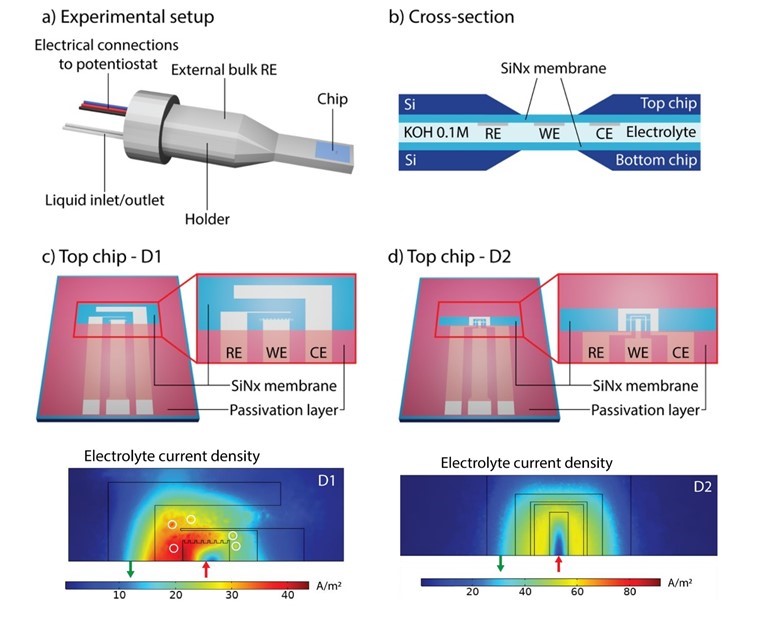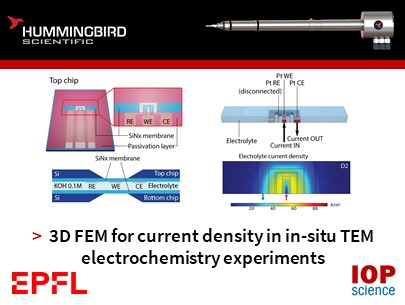Researchers from the École Polytechnique Fédérale de Lausanne developed a method to simulate the electrochemical behavior of platinum electrodes in in-situ liquid cells used in transmission electron microscopes. They used Hummingbird Scientific’s Bulk liquid electrochemistry TEM holder to verify the 3D model shown below.

Figure 1. (a) Schematic view of the experimental setup showing the TEM holder, the external bulk RE, the holder, liquid and electrical connections and the location of the chips (not-to-scale). (b) Cross-sectional scheme of the two MEMS chips stacked in the holder (not-to-scale). (c) and (d) Schematic view of the front side of the in-house fabricated top chip, highlighting the three coplanar Pt electrodes in the two different geometries, i.e. D1 (c) and D2 (d), displaying the non-passivated region, the SiNx membrane (Scaled), and distributions for geometries D1 and D2 among COMSOL simulations results for an applied current of 41nA. Red and green arrows illustrate current going in and out of the system, respectively. White circles highlight hot spot regions. Copyright © 2021 Journal of the Electrochemical Society
The model successfully predicted electrochemical behaviors with respect to the electrolyte current density between working and counter electrodes and conclude that a WE surrounded by a CE on all sides gives the most homogeneous electrode current.
Reference: Morgan Binggeli, Tzu-Hsien Shen and Vasiliki Tileli “Simulating Current Distribution of Oxygen Evolution Reaction in Microcells Using Finite Element Method” © 2021 Journal of the Electrochemical Society. Full Paper
View All News

